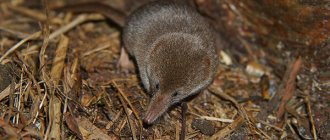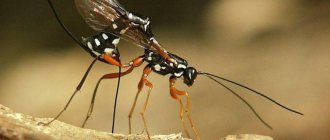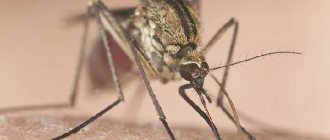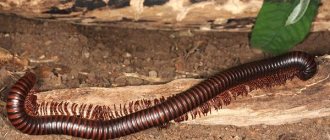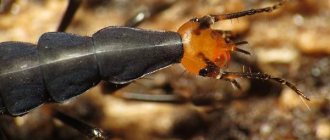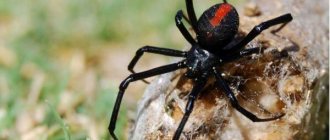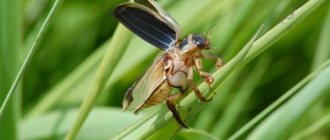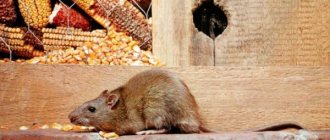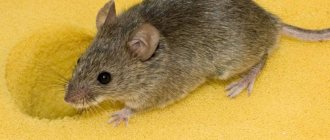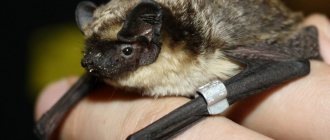The house mouse, or decorative mouse, is increasingly becoming the object of attention of people who are hesitant to buy a dog or cat. These are absolutely unpretentious animals with good adaptive qualities. They quickly become attached to their owners and never show aggression.
However, caring for pet mice has its own nuances. Therefore, before getting such a pet, it is recommended to learn more about the types, nature and features of caring for these rodents.
Description of house mice
Decorative mice are the closest relatives of ordinary house mice. Unlike their wild relatives, they are not afraid of people and therefore are easily tamed.
Appearance
Ornamental mice are small rodents with an elongated pointed muzzle, large round ears and bulging, bead-like eyes.
Their body size is 6.5-9.5 cm in length. The animal weighs 15-30 g. At the back it has a long tail, covered with scales and very sparse thin hairs.
The spine of house mice consists of 5 sections. There are 13 in the thoracic spine, 6 in the lumbar spine, and 7 in the sacral spine. The number of caudal vertebrae can reach up to 20.
Interesting. The number of cervical vertebrae in decorative mice is the same as in a giraffe - 7 pieces.
The narrow chest is formed by 13 pairs of ribs. Females have 5 pairs of nipples on their bellies. Mice have 4 fingers on their forelimbs and 5 on their hind limbs. They are equipped with thin, sharp claws. The front legs are slightly shorter than the hind legs.
Another feature of domestic mice is the absence of pubic fusion of the pelvic bones. Thanks to this, domestic mice can freely and painlessly give birth to fairly large cubs.
The mouse has 16 teeth: 3 chewing teeth on the upper and lower jaws on each side and 4 incisors. The growth of the latter does not stop throughout life, so they need to be ground down.
Breeds of domestic mice
Thanks to breeding work, several types of ornamental mice have appeared. They differ from each other in the length and structure of their coat:
- Short-haired domestic rodents have a dense and smooth coat with a natural glossy sheen.
- Satin mice have hollow hairs that reflect light well, giving their fur a metallic sheen.
- Rex mice have curly fur.
- Abyssinian (rosette) rodents have long or short fur, on which spiral-shaped vortices of hair are formed. According to the standard, these decorative mice must have at least two sockets - one on the left and one on the right side of the body.
- The Angora breed is distinguished by long and smooth silky fur.
- The Texel is a long-haired variety with a curly coat. Curls should be evenly distributed throughout the body. Domestic Texel mice should have curly whiskers.
- Hairless are hairless rodents with folded skin. The mustache may be short, curly or completely absent.
- Downy, or fuzz - these domestic mice resemble rexes, but their coat is softer and velvety with small curls.
Shorthaired mouse
Decorative texel mouse
Hairless decorative mouse
Colors
Decorative mice are available in a wide variety of colors. The most popular are:
- Plain - white, black, chocolate, blue, silver, cream, fawn. Those with white fur may have ruby, black or pink eyes.
- Ticked - when each hair has dark and light areas. Common colors are agouti (blue and grey), chinchilla, pearl, cinnamon, tan, silver.
- Marked or marked is a color that combines areas of coat of different colors. These include - belted, brindle, Dutch, uniform, brocken, spotted, marbled, motley, white rump and others.
- Combined. This group includes shaded and point colors - Himalayan, smoky, Burmese, Siamese, sable and others.
Character and habits of domestic mice
Although decorative mice are nocturnal creatures, at home they often adapt to the biorhythms of their owners. Under artificial light, these rodents can stay awake most of the day, unlike hamsters. Children can pick up a pet without fear - aggression is not typical for decorative mice.
Regardless of whether the mouse is a domestic or wild animal, these rodents can live in groups. They quickly adapt to new conditions and are easily tamed. At home, both different-sex individuals and several females are kept together.
Nimble and mobile decorative rodents are constantly fussing, running, stocking up. House mice are able to interact with each other, unlike hamsters. There are no conflicts between rodents living in the same cage.
These decorative rodents can make interesting sounds. Their squeak resembles a squeak. Sometimes mice chirp like crickets and rustle when they are awake.
Health and life expectancy of ornamental mice
In the wild, mice live no more than 18 months. They die due to attacks by natural enemies, unstable climatic conditions and diseases. Domestic mice are protected from many negative factors, so they live longer - 2.5-3 years.
With proper care, house mice rarely get sick. The state of health may worsen due to low or high humidity in the room, draft, as well as dietary errors.
Elderly individuals often develop tumor processes. Young people have problems with teeth, kidneys, and skin diseases. Cases of eye inflammation are common.
An attentive owner should handle and inspect the pet mouse daily. The following symptoms indicate a deterioration in health:
- hair loss, wounds or ulcers on the skin;
- tearfulness, nasal discharge;
- tousled, unkempt fur;
- apathy, lethargy, lack of physical activity;
- refusal of food;
- bloody discharge under the tail.
Attention! If signs of disease are detected, it is necessary to show the pet mouse to a rodentologist. You cannot postpone a visit to the clinic - diseases in ornamental rodents develop rapidly.
Wild mice in nature and near humans
These small rodents are widespread throughout the globe. Endurance, the genetically inherent ability to quickly adapt and survive in difficult conditions, and unpretentiousness in nutrition allow mice to survive even in the Far North, high-mountain and arid regions.
House mice
All wild mice can be divided into 2 large groups:
- those that settle directly in forests, fields, haystacks, tree hollows, and rodents;
- those who live next to a person, but independently.
The latter try not to catch the eye of people; in fact, they are wild. But in terms of nutrition, such mice have a much easier life than their wild counterparts. They use the reserves accumulated by people and spoil food and grain. For this, animals often have to pay with their lives: they get caught in mousetraps, are poisoned by pesticides, and die in the paws of domestic cats.
The weight of a house mouse is 12–35 g. The body of the rodent does not exceed 10 cm in length, the tail is much shorter than the body (its length is approximately 4–5 cm). If a house mouse is hungry, it can feed itself not only with food, but also, for example, with candles or soap. The animals are very fertile, producing 4–10 litters of mice annually. Each litter of house rodents contains at least 3 cubs, most often 10–12 animals, which mature within 1.5 months.
Such mice do not have to live in poverty without food . Their main problem is to avoid traps and domestic predators. It's no surprise that rising house mouse populations are a major threat to agricultural supplies. Farmers go to great lengths to get rid of unwanted neighbors. Despite this, house mice live longer than their wild counterparts by 2–3 years thanks to food reserves and constant access to water.
Natural rodents
A distinctive feature of all mice is their gluttony. The availability of food in the habitat of wild rodents becomes a determining factor of survival for animals.
Table 1. Features of the most famous mouse species
| Name | Approximate body length (cm) | Peculiarities | Habitat |
| Shrew | 7–10 | Elongated muzzle shape | America, Australia |
| Lesnaya | 10–12 | The fur is grayish-brown, light on the belly. Red spot on chest | Siberia, Altai, Ukraine, Belarus |
| Field | 8–13 | Elongated muzzle, pointed ears. The fur is golden brown, with a dark stripe along the back. | Lowland areas of Europe, Asia |
| Gerbil | 15–20 | Reddish-gray or ocher color. There is a fluffy tassel on the tail | African deserts, Asia, Eastern European steppes |
| Herbal | 25–30 | Settle near bodies of water | South Africa |
| White | 8–11 | The fur is white. The first domesticated mouse species | Northern latitudes, high mountain regions |
The food supply conditions for mice living in the wild are constantly changing. They depend on many reasons:
- weather fluctuations;
- crop yields in nearby fields;
- human intervention;
- changes in the composition and number of competitors and predators.
Mice have an accelerated metabolism. These animals are forced to eat 5 times a day to maintain their strength. For 1 adult, 3–5 ml of water per day is enough. If a mouse lacks fluid, it makes up for it with juices from plants (in summer) or melted snow (in winter).
Interesting! Mice's innate ability to adapt, coupled with incredibly high fertility, helps them survive and maintain their population in nature.
Scientists have proven that the life cycle of wild rodents does not exceed 4 years. But in fact, the average lifespan of a mouse in its natural environment is about a year. The rare animal survives in the wild for up to one and a half years. The reason that wild mice do not live long is the harsh, dangerous conditions of the surrounding world.
The lifespan of mice is affected by:
- presence or absence of food;
- excess moisture;
- drought - mice have a hard time with a lack of water; it is much easier for them to endure a lack of food than to suffer from thirst;
- the presence of sown fields with irrigation systems in the territory where rodents live - this helps mice survive and increases the duration of their life cycle.
Interesting! It is mice, with their accelerated metabolism, that are regularly used for experiments to increase life expectancy.
Interesting facts about mice
The following facts demonstrate how amazing house mice are:
- Contrary to popular belief, these decorative rodents love sweets and lard, not cheese, but eating such food is harmful.
- The mouse genome is almost 80% identical to the human genome.
- Each mouse family has its own unique smell, thanks to which rodents determine their own membership in a particular group.
- House mice have very good hearing, but poor eyesight. They perceive sounds with frequencies up to 100 kHz.
- In a stressful situation, the mouse secretes a substance with a pungent odor along with its urine. It warns relatives of danger. When other rodents sense it, they become afraid and run away.
Enemies of mice
The mouse is the most important link in many food chains. For some animals, mice are the main source of food. The main enemies of mice:
- snakes and large lizards;
- mammals (cats, foxes, small mustelids, mongooses, wolves, badgers, hedgehogs);
- birds (owls, eagles, owls, kites, hawks, crows).
Sometimes mice become victims of their close relatives - rats. Yes, and the answer to the question can a mouse eat a mouse is also yes. This happens very rarely, but mice deprived of the opportunity to get food can attack their weaker relatives.
And, of course, we must not forget about the main enemy of house mice – humans.
Is it worth getting a decorative mouse at home?
A live house mouse costs 200-300 rubles. The low price is one of the reasons why many decide to get such a pet. But before you do this, it’s worth learning about all the advantages and disadvantages of keeping a decorative rodent at home.
| pros | Minuses |
| The mouse does not take up much space, does not run around the apartment, and does not damage the owner’s property | The noises made by mice at night disturb the sleep of household members |
| Decorative rodent is undemanding to living conditions | Specific smell |
| Mice are omnivores | Low intelligence of a rodent |
| Small expenses for food and maintenance | Short lifespan |
| The decorative mouse is easy to tame and does not bite. | |
| A pet gives a lot of positive emotions |
How does mating happen?
Males are ready to breed at any time, but they become especially interested in mating during the female's estrus. At home, mice of different sexes are kept separately. A female is placed with a male only for mating. When rodents live together permanently, the mouse gives birth to one litter after another. This will negatively affect her health.
A female can only give birth to cubs if she meets a male during estrus. During this short period of time, her behavior changes. In the presence of a male, she raises the back of her body and freezes in this position for several seconds.
The acquaintance of opposite-sex individuals does not last long. The male then approaches from behind and performs sexual intercourse. Coitus alone is not enough to conceive babies. It is advisable to leave the couple together for a day to allow several mating attempts to occur. Then the probability of the mouse having babies will increase significantly. In the intervals between mating games, rodents eat, drink water and wash their fur.
Attention! The female should be placed in a separate cage the day after her meeting with the male. She needs rest while bearing her cubs.
In the wild, rodents breed only in the warm season. House mice breed all year round. The animal owner must control this process. Rodentologists recommend mating a female with a male 4-5 times a year. Due to frequent pregnancies and childbirths, immunity decreases and the risk of stillbirth or non-viable babies increases.
Care and maintenance of domestic mice
There is nothing difficult about caring for and maintaining decorative mice, even for a child. The conditions of detention should be as follows:
- indoor air temperature – +20…+27 degrees;
- humidity – 55-65%;
- dim lighting;
- no draft.
Attention! It is important to choose the right place for a house mouse to live. The cage should not be located near heating devices or in direct sunlight. Overheating is dangerous for the life of a rodent.
Cage and filler
Before buying a cage, you need to decide how many mice will live there. For a family of 3-4 individuals, a dwelling measuring 60x50 cm is suitable. The height can be any, but not less than 40 cm. For one house mouse, a cage with dimensions of 40x30 cm is used.
Preference is given to designs made of metal gratings with a plastic removable tray. It’s good if it has high sides, then the filler won’t spill out. The door must close securely, otherwise the decorative mice will escape.
A thick layer of wood shavings is poured onto the bottom - at least 3-4 cm. Only natural materials can be used as bedding - pressed sawdust, crushed corn cobs. Cotton wool, rags, paper are not the best option, as they do not hold back unpleasant odors and quickly get wet.
Interior design of a mouse's home
It is recommended that pet mice have a resting house. You can make it yourself from scrap materials or buy it ready-made at a pet store. A little filler is poured inside so that mice can burrow into it when they are cold or scared.
In addition to the house, you will need a feeder and water bowl, as well as a running wheel to increase physical activity. It is better to give preference to a solid structure without holes. The tail can get stuck there while running, which can lead to injury. If there is enough space in the cage, it is worth placing pipes, tunnels and ladders inside. With their help, it is convenient to connect the first level with the second.
Hygiene
Cleaning the cage of a decorative rodent is done as the litter becomes dirty. If there is only one house mouse living there, the procedure is carried out once every 5-7 days, if there are several, more often. The old filler is thrown away and new filler is added. Every time during cleaning, all equipment is washed - drinking bowl, feeder, pipes and wheel. It is better to clean the tray with a soda solution and scald it with boiling water.
Attention! An unpleasant smell in the cage appears only because the owner of a pet rodent rarely cleans the cage. This is also why mouse fur stinks.
The fur of a house mouse also needs to be looked after. It becomes contaminated with feces and urine, and pieces of food stick to it. Even if the fur smells bad and looks untidy, the decorative rodent should not be bathed. Mice cannot swim and are very afraid of water, unlike domestic rats. Dirty fur can be cleaned in other ways - with a toothbrush, a damp cotton pad or a piece of soft cloth.
Bathing a house mouse in water is allowed in exceptional cases when the contamination cannot be removed in any other way or is life-threatening. To wash your pet you will need a deep bowl. No more than 2 cm of water is taken into it. The fur is gently wetted by hand, then detergent for rodents is applied, lathered and rinsed. After thorough rinsing, the pet mouse is wrapped in a towel and held in your arms for as long as possible so that it does not catch a cold.
Taming of ornamental rodents
A house mouse is easier to tame than a hamster. The main thing in this matter is consistency and regularity of communication.
After purchasing the decorative rodent, leave it alone for a day or two. During this time, he will adapt, inspect and sniff his new home. Next, you can begin to gradually tame the mouse:
- You should approach the cage more often and talk to the rodent in a quiet and gentle voice.
- The next stage is getting used to the owner’s smell. To do this, you need to feed the mouse by hand through the grill.
- After a few days, you can try to open the door and give something tasty in the palm of your hand. The rodent will have to come and take the food on its own.
- Soon the house mouse will understand that the owner's hands do not pose a threat. She will begin to climb right into your palm and eat calmly. At such moments, you need to carefully stroke her back.
- At the final stage of taming, the decorative mouse will calmly allow you to pull yourself together. The main thing is not to scare her with sudden movements or loud noise.
To prevent a house mouse from going wild, you need to regularly communicate with it. If you don't pick it up for a long time, it will quickly wean itself off its owner.
Important! House mice love company. If an ornamental rodent lives alone in a cage, it needs to be given more attention.
Structure and appearance
The tiny mouse is so small that it fits in the palm of a child. The body length of an adult rodent is 60–70 mm, the tail reaches 65 mm. He is a flexible assistant to the baby mouse - he helps her maintain her balance.
It is worth noting the tenacious hind legs, which allow the rodent to perform aerial acrobatic stunts.
The weight of a baby mouse ranges from 7–10 grams.
The fur of this adorable rodent is colored in different colors. The upper part of the body is sandy-ochre, dark orange or white, and the back and tail are yellowish, reddish, brown-red, brown or gray. Unlike other types of mice, this rodent's muzzle is shorter, blunter, and its ears are small.
Features of feeding
House mice are undemanding when it comes to nutrition. Their diet is based on dry grains and seeds. Pet stores sell ready-made mixtures with a rich composition for pet rodents. These include:
- millet;
- barley;
- wheat;
- corn;
- peas;
- buckwheat;
- sunflower seeds;
- nuts.
Domestic mice also enjoy eating fruits and vegetables - carrots, cabbage, cucumbers, zucchini, apples and pears. Twice a week you can give rodents low-fat cottage cheese, boiled chicken breast, eggs, dried fruits and cereals. In the summer, fresh greens are introduced into the diet of domestic mice - leaves of nettle, dandelion, plantain.
Prohibited products:
- Red beetroot;
- sweets;
- bread;
- conservation;
- snacks, salty foods;
- sausage, frankfurters;
- fatty food;
- mushrooms.
To wear down their teeth, domestic mice are given twigs of fruit trees or shrubs to chew on. To compensate for the deficiency of minerals, a salt lick stone is placed in the cage. The drinking bowl should always be filled with clean water.
Nutritional Features
The small rodent eats the same food as other members of the mouse family. The basis of the diet in the summer consists of small insects, caterpillars, larvae, and plants. With the onset of spring, small mice willingly eat fresh sprouts and young buds of bushes and trees.
In cold weather and throughout the year, small rodents eat seeds of cereals and legumes, corn, sunflowers, and fruits of trees and shrubs.
If a baby mouse goes into holes for the winter, it makes a reserve. However, more often small rodents accumulate in barns, warehouses, haystacks and granaries.
Breeding
House mice become sexually mature at 30-35 days of age. In females, estrus begins; in males, a sign of maturation is the descent of the testes into the scrotum. It is recommended that females be mated for the first time upon reaching three months of age.
Effective mating is possible only during estrus, which occurs in females every 3-8 days and lasts from 4 to 20 hours. Pregnancy in house mice lasts 22 days.
Approximately in the middle of gestation, the female begins to build a house or nest from the litter in which the pups will be located after birth. She uses wood shavings, scraps of soft fabric, paper, and napkins as building materials. It is important to ensure that all this is at the disposal of the pregnant female.
There are from 5 to 9 mice in a litter. They are born naked, blind and deaf. The weight of a newborn mouse is 1-2 g.
Little mice develop quickly. On the third day they develop hearing, and on the fourth day their bodies are covered with soft fur. By the fifth day of life, their body weight doubles. Two weeks after birth, the eyes open. From this age, domestic mice begin to feed themselves. The young animals are weaned from their mother on the 21st-25th day.
To avoid uncontrolled reproduction, male domestic mice are separated from females.
Many people are not sure whether to get a pet mouse, because this animal has already earned a bad reputation. However, ornamental species of rodents make excellent pets - they are easy to care for, interesting to watch, mice are quickly tamed, and do not require much attention or high maintenance costs.
Interesting Facts
Like any other species, the baby mouse has several very interesting behavioral features:
- This unusual little rodent always hangs its nests on blades of grass half a meter above the ground. For the new offspring, the mother mouse builds a separate airy home. In some areas of the Caucasus, these mammals can be seen even at an altitude of up to 2200 meters.
- The weight of a newborn rodent does not even reach a gram.
- The little mouse is an excellent swimmer.
- Surprisingly, with the onset of winter, the rodent does not hibernate.
- These mice are quite voracious. Within 24 hours, one individual can eat up to 5 grams of food.
- In nature, they are carriers of certain diseases. Among them: leptospirosis, tick-borne encephalitis and tularemia.
Nutrition
Nutrition of mice Under natural conditions, house mice feed on the seeds of various plants.
They prefer cereals, legumes, and asteraceae, but do not disdain insects and their larvae. They can feed on carrion. If there is access to water, house mice eat plants. Green matter can make up up to a third of their normal diet. House mice should drink up to 3 ml of water per day. If they are exposed to dry climates and eat only dry food, they will die from dehydration within two weeks.
Interesting!
The proximity to humans gives them a clear advantage in the variety of food. They can eat not only their usual food, but also meat, dairy products, and love chocolate. In the absence of the owners of the house, it is not difficult for them to try soap, candles, glue and other things useful to humans.
